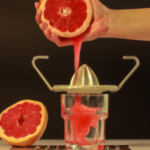Juice Tips and Tricks
How To Juice A Grapefruit
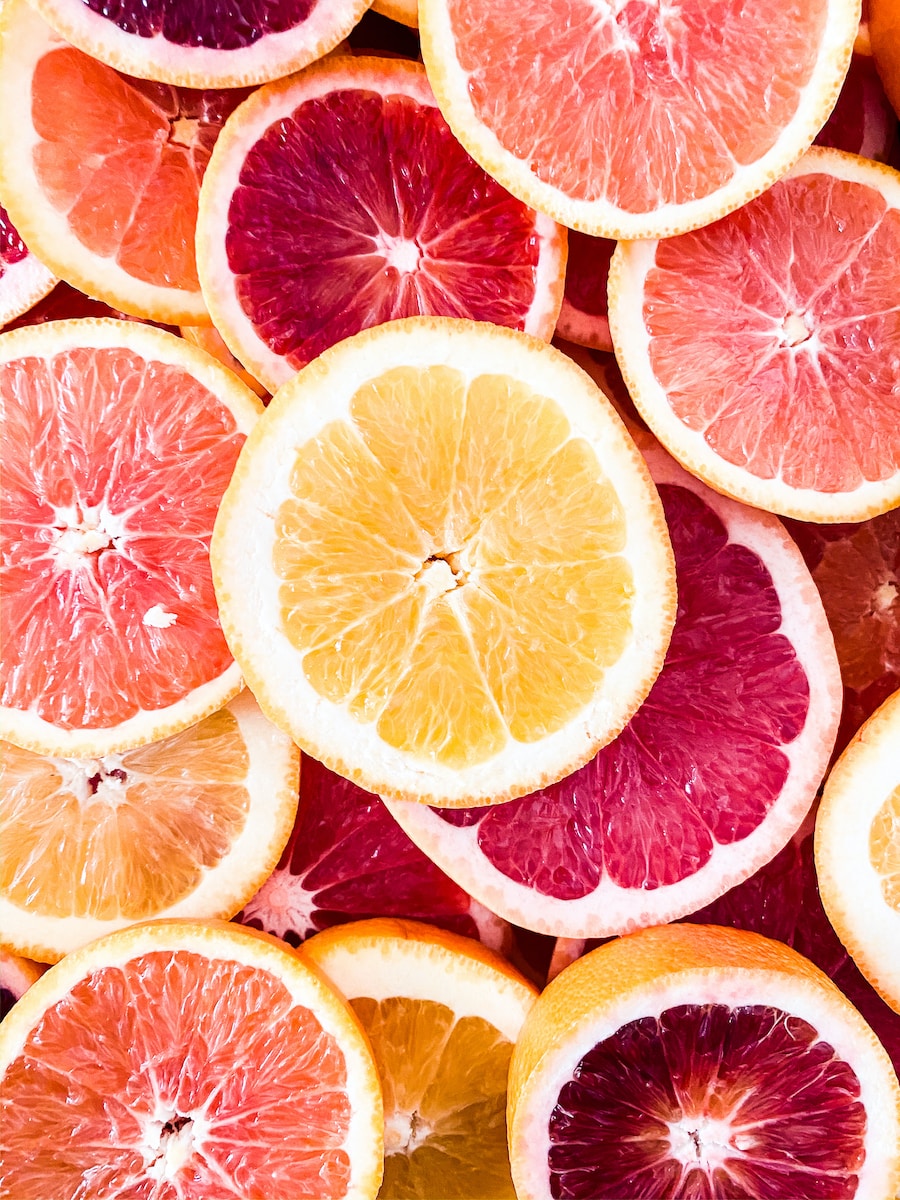
Starting my day with a refreshing glass of grapefruit juice is a ritual I always look forward to. Not only does it wake me up, but it also provides a wide range of health benefits. Packed with vitamin C and antioxidants, grapefruits can boost your immune system and help protect against various illnesses.
If you’re looking to incorporate more grapefruit into your diet, juicing is a great way to do it. But if you’ve never juiced a grapefruit before, it might seem a bit intimidating. Don’t worry, though – juicing a grapefruit is actually quite easy, and with the right tools and techniques, you can have a delicious glass of juice in no time.
In this article, I’ll guide you through the process of juicing a grapefruit, from choosing the right fruit to enhancing the flavor of your juice. So let’s get started!
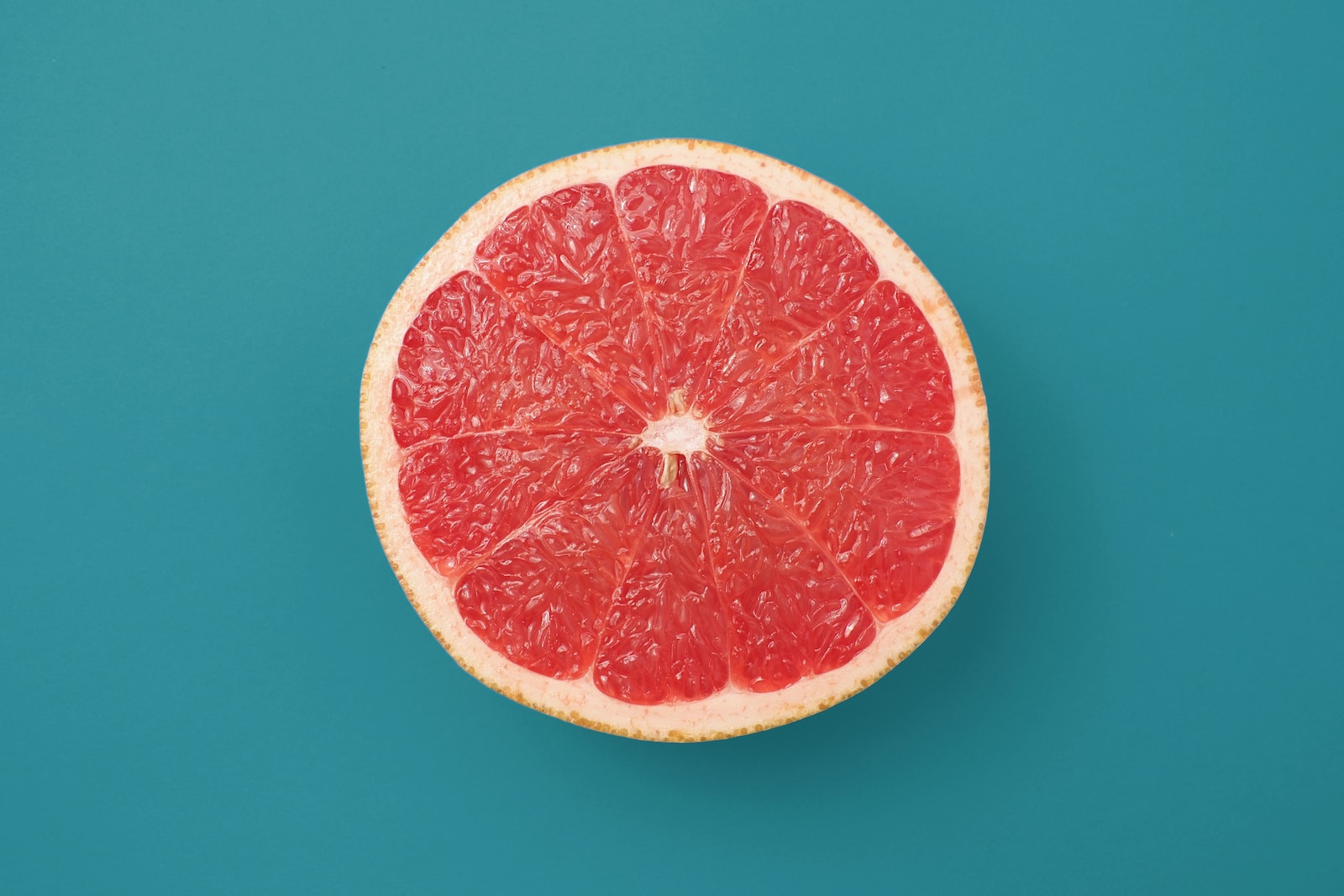
Key Takeaways
- Choose slightly pink grapefruit for sweeter juice
- Remove bitter white pith before juicing
- Store in airtight container in fridge for up to a week
- Experiment with different juice combinations for perfect balance of sweet and tart
The Benefits of Juicing Grapefruits
You’re going to love the burst of tangy, citrus flavor and the health benefits that come with juicing a grapefruit. Grapefruits are rich in vitamins A and C, antioxidants, and fiber. These nutrients can help improve your immune system, boost your metabolism, and aid in digestion.
The nutritional value of grapefruit doesn’t end there. This fruit is also low in calories and can help regulate blood sugar levels. Its high water content can also keep you hydrated throughout the day.
So, not only does grapefruit juice taste delicious, it’s also packed with numerous health benefits.
Now, let’s talk about choosing the right grapefruit.
Choosing the Right Grapefruit
Funny enough, even though grapefruits are known for their tangy taste, the sweetest ones are the ones with a slightly pink hue. When it comes to choosing the right grapefruit for juicing, it’s essential to consider the variety and seasonal availability.
There are two main varieties of grapefruit: white and pink. White grapefruits have a slightly bitter taste, while pink grapefruits are sweeter. However, the sweetness level can vary depending on the season.
Grapefruits are in season from November to May, and the peak season is December to March. During this time, you can find the sweetest grapefruits with a pink hue. It’s best to avoid grapefruits that are too ripe or too hard, as they won’t produce as much juice.
As you prepare to juice your grapefruit, it’s important to have the right tools on hand.
Tools You Will Need
To get started with juicing a grapefruit, all you’ll need are a few basic tools. First, you’ll want to make sure you have a sharp knife and a cutting board. It’s important to use a sharp knife to ensure that you can easily cut through the grapefruit’s tough skin. A cutting board will also help protect your countertop from any juice or mess that may occur during the process.
Additionally, you’ll want to have a citrus juicer on hand. While it’s possible to juice a grapefruit by hand, a juicer will make the process much easier and more efficient. There are many different types of citrus juicers available on the market, ranging from electric to manual. Choose one that fits your needs and budget, and be sure to follow any specific instructions or juicing techniques recommended by the manufacturer.
With these tools, you’ll be well on your way to creating delicious grapefruit juice and incorporating it into your favorite citrus recipes.
Now that you have all the tools you need, it’s time to move on to preparing the grapefruit. Start by washing the grapefruit thoroughly under running water to remove any dirt or debris. Then, cut the grapefruit in half using your sharp knife and cutting board.
From there, you can easily juice the grapefruit using your citrus juicer.
Preparing the Grapefruit
Once you’ve gathered your tools, the first step in preparing your grapefruit is to wash it thoroughly under running water to remove any dirt or debris. This is important because it ensures that your grapefruit is clean and safe for consumption.
After washing, pat it dry with a clean towel and place it on a cutting board. When it comes to peeling techniques, there are several methods you can use. One common way is to cut off both ends of the grapefruit and then slice off the skin in sections, following the curve of the fruit.
Another way is to make vertical cuts along the fruit, from top to bottom, and then carefully remove the skin in sections. As for cutting methods, you can slice the grapefruit into wedges or segments, or you can cut it in half and scoop out the flesh with a spoon. Whatever method you choose, be sure to remove as much of the bitter white pith as possible before juicing the grapefruit.
Now that you’ve prepared your grapefruit, it’s time to move on to juicing it.
Juicing the Grapefruit
Get ready to enjoy a refreshing beverage by squeezing out all the delicious citrusy goodness from your freshly prepared grapefruit. Juicing a grapefruit is a simple process that can be done in a few easy steps. The first method involves using a hand-held citrus juicer, which is a small kitchen gadget that helps extract juice from fruits. Simply cut the grapefruit in half, place it on top of the juicer, and press down firmly to release the juice. The second method involves using a manual juicer which requires a bit more effort. Cut the grapefruit in half, place it on the juicer, and twist it to extract the juice. For an even smoother experience, you can strain the juice through a fine mesh sieve to remove any pulp or seeds. Now that you know how to get perfect grapefruit juice, why not experiment with other fruits? If you’re curious about how to make pear juice, follow a similar process by peeling and cutting ripe pears, then use a juicer to extract their sweet nectar for a refreshing treat. In addition to grapefruit and pear juice, you could also try mixing different fruits together for a more unique blend of flavors. Using a combination of citrus and sweet fruits like pears can result in a wonderfully balanced drink. If you’re still unsure about **how to make pear juice**, don’t hesitate to give it a try — the process is just as simple and rewarding!
If you don’t have a juicer, there are alternative methods you can use to juice a grapefruit. One way is to use a fork to loosen the fruit inside the grapefruit, and then squeeze it out by hand. Another way is to use a blender or food processor to blend the grapefruit into a juice. This method is great if you want to include other fruits or ingredients in your juice. Regardless of the method you choose, juicing a grapefruit is a great way to take advantage of its nutritional value. Grapefruits are low in calories and high in vitamin C, fiber, and potassium. Incorporating grapefruit juice into your diet can improve digestion, lower cholesterol, and boost your immune system.
Now that you’ve achieved a freshly squeezed cup of grapefruit juice, you’ll want to know how to store it properly to ensure the best taste and quality.
Storing Grapefruit Juice
Congratulations, you’ve successfully extracted the nectar of the gods and now it’s time to figure out how to keep that liquid gold from turning into a bitter disappointment.
When it comes to long term storage of grapefruit juice, there are a few things you should keep in mind.
First and foremost, it’s important to store your juice in an airtight container in the fridge to avoid oxidation. This will help keep the juice fresh for up to a week.
If you want to store your grapefruit juice for longer than a week, freezing is a great option. Simply pour the juice into an ice cube tray and freeze. Once the cubes are frozen, transfer them to a freezer-safe bag and store in the freezer for up to three months. When you’re ready to use the juice, simply thaw the cubes in the fridge or at room temperature. Keep in mind that freezing may affect the texture and taste of the juice, so it’s best to only freeze what you plan to use in the near future.
To enhance the flavor of your grapefruit juice, there are a few tips to keep in mind.
One of the easiest ways to add some sweetness to your juice is by mixing it with another type of juice, such as orange or pineapple. You can also add a bit of honey or agave nectar to the juice to balance out the bitterness. Another option is to add a pinch of salt, which can help reduce the bitterness and enhance the natural sweetness of the grapefruit.
Tips for Enhancing the Flavor
When it comes to enhancing the flavor of grapefruit juice, I’ve found that adding sweeteners can really make a difference. Personally, I like to use honey or agave nectar to balance out the tartness of the juice.
Another option is to mix grapefruit juice with other juices, like orange or pineapple, to create a more complex and flavorful blend. Experimenting with different combinations can help you find the perfect balance of sweetness and tartness in your juice.
Adding Sweeteners
If you’re looking for a sweeter tasting grapefruit juice, try adding a bit of honey or agave to the mix for a delicious twist! These natural alternatives are a healthier option than using processed sugar, and they add a unique flavor profile to your grapefruit juice. However, it’s important to practice portion control when adding sweeteners.
Too much can overpower the natural tartness of the grapefruit, and it can also add unnecessary calories to your drink. Another option for a sweeter grapefruit juice is to mix it with other fruit juices. Pineapple or orange juice can add a tropical twist, while cranberry juice adds a nice tangy flavor.
Experimenting with different juice combinations can help you find the perfect balance of sweet and tart. In the next section, I’ll discuss some other fruit juices that pair well with grapefruit.
Mixing with Other Juices
To create a delicious and unique flavor, you can mix other fruit juices with your grapefruit juice. Some juices that go well with grapefruit include orange, pineapple, and cranberry. These juices not only add a sweetness to the tartness of grapefruit, but they also provide additional health benefits.
For example, orange juice is high in vitamin C, which can help boost the immune system and promote healthy skin. Pineapple juice contains bromelain, an enzyme that aids in digestion and can reduce inflammation. Cranberry juice is known for its ability to prevent urinary tract infections and promote healthy kidneys. By mixing these juices with grapefruit, you can create a tasty and nutritious beverage that can benefit your overall health and wellness.
As you can see, there are many other juices that can be mixed with grapefruit to create a delicious and nutritious drink. But why stop there? In the next section, we’ll explore some creative ways to use grapefruit juice in recipes beyond just a simple beverage.
Creative Ways to Use Grapefruit Juice
You can brighten up your day with a refreshing grapefruit juice cocktail, bringing a burst of sunshine to your taste buds. But did you know that grapefruit juice can also be used in creative ways beyond just drinking it straight? Here are some ideas to get you started:
-
Grapefruit mocktails: Mix grapefruit juice with sparkling water, mint leaves, and a splash of honey for a tasty and healthy mocktail.
-
Grapefruit vinaigrette: Make a tangy and delicious salad dressing by combining grapefruit juice, olive oil, Dijon mustard, and a pinch of salt and pepper.
-
Grapefruit marinade: Add grapefruit juice to your favorite marinade recipe for a citrusy twist on meats or veggies.
-
Grapefruit sorbet: Freeze grapefruit juice in an ice cream maker for a refreshing and low-calorie dessert.
These are just a few examples of how you can use grapefruit juice in creative and tasty ways. However, it’s important to note that grapefruit can interact with certain medications, so it’s always a good idea to check with your healthcare provider before consuming grapefruit or grapefruit juice.
Potential Risks and Side Effects
As someone who enjoys incorporating grapefruit juice into my diet, it’s important to be aware of potential risks and side effects.
One major concern is the interference with certain medications, such as statins and anti-depressants, which can lead to dangerous side effects.
Additionally, allergic reactions to grapefruit are possible, with symptoms ranging from mild to severe.
Understanding these risks can help us make informed decisions about incorporating grapefruit juice into our daily routine.
Interference with Certain Medications
Although grapefruit is a delicious and healthy fruit, it can interfere with certain medications, causing serious health issues. This is because grapefruit contains compounds that can affect the way your body metabolizes certain drugs, leading to an increased concentration of the drug in your bloodstream.
Here are some examples of medications that can be affected by grapefruit consumption:
-
Statins: These drugs are commonly used to lower cholesterol levels. Grapefruit can increase the concentration of statins in your bloodstream, leading to an increased risk of side effects such as muscle pain and liver damage.
-
Blood pressure medications: Grapefruit can interfere with the way your body processes certain blood pressure medications, leading to an increased risk of side effects such as dizziness and fainting.
-
Anti-anxiety medications: Grapefruit can increase the concentration of certain anti-anxiety medications in your bloodstream, leading to an increased risk of side effects such as drowsiness and confusion.
It’s important to talk to your healthcare provider about any potential medication interactions before consuming grapefruit or grapefruit juice. In the next section, we’ll discuss the potential risks of allergic reactions to grapefruit.
Allergic Reactions
Beware of the unexpected! Grapefruit can trigger allergic reactions in some people, which can range from mild symptoms such as itching and hives to severe reactions such as anaphylaxis. If you’ve experienced an allergic reaction to citrus fruits before, you may be at risk for a grapefruit allergy.
It’s important to manage allergies so that you can enjoy the benefits of grapefruit without any adverse reactions. If you suspect a grapefruit allergy, it’s important to avoid consuming grapefruit or grapefruit products. Be sure to read food labels carefully and ask your healthcare provider or allergist about any potential cross-reactivity with other citrus fruits.
Prevention tips include carrying an epinephrine auto-injector if you have a history of severe allergic reactions, and always informing your healthcare provider of any food allergies before any medical procedures or treatments.
By managing your grapefruit allergy, you can still enjoy the delicious taste and health benefits of this citrus fruit.
Frequently Asked Questions
How many grapefruits should I juice at once?
For optimal juicing efficiency, I recommend juicing one grapefruit at a time. This allows for maximum juice extraction and prevents the pulp from clogging the juicer. Plus, it’s easier to control the sweetness and acidity of the juice.
Can I juice a grapefruit that is not fully ripe?
I was curious about juicing unripe grapefruits, but I learned that it’s not recommended. Unripe fruit lacks the nutritional benefits of fully ripe fruit, so it’s best to wait until they’re ready to juice.
Should I remove the seeds from the grapefruit before juicing?
Yes, it’s best to remove the seeds from a grapefruit before juicing to avoid a bitter taste. Seedless grapefruit varieties are available and using a grapefruit juicing tool can make the process easier.
How long will grapefruit juice stay fresh in the refrigerator?
Looking to get the most out of your grapefruit juice? Store it in an airtight container in the refrigerator for up to three days. Drinking grapefruit juice daily can provide a variety of health benefits, including improved digestion and lower cholesterol levels.
Can I mix grapefruit juice with other types of juice?
Yes, you can mix grapefruit juice with other types of juice. It’s a great way to enhance the benefits of grapefruit juice, and there are many grapefruit juice recipes that incorporate other juices like orange or lemon.
Conclusion
In conclusion, juicing grapefruits is an excellent way to increase your intake of essential nutrients and support overall health. It’s easy to create delicious and refreshing grapefruit juice that can be enjoyed on its own or used in a variety of recipes. The benefits of grapefruit juice are numerous and well-documented, including boosting immunity, aiding digestion, promoting weight loss, and reducing inflammation.
But don’t just take my word for it – try juicing a grapefruit for yourself and experience the amazing flavor and health benefits firsthand. There are endless possibilities for incorporating this versatile fruit into your diet, whether you prefer your juice sweet or tart. So go ahead and give it a try – you might just be surprised at how much you love it! And who knows, you might even become a grapefruit juicing pro in no time – the possibilities are truly endless.
Cindy thoroughly researches juicing trends, techniques, and recipes to provide readers with practical advice and inspiration. Her writing style is accessible, engaging, and designed to make complex concepts easy to understand. Cindy’s dedication to promoting the advantages of juicing shines through her work, empowering readers to make positive changes in their lives through the simple act of juicing.
Juice Tips and Tricks
How to Make Aloe Vera Juice Taste Better

Tired of the strong flavor of aloe vera juice? No problem, we’ve got the answer for you.
In this article, we’ll share some tips and tricks to make your aloe vera juice taste better. We have tried and tested various methods to enhance the flavor without compromising the health benefits.
From choosing the right juice to adding natural sweeteners and infusing with fruits and herbs, we’ve got all the information you need to transform your aloe vera juice into a delightful and refreshing beverage.
Let’s dive in!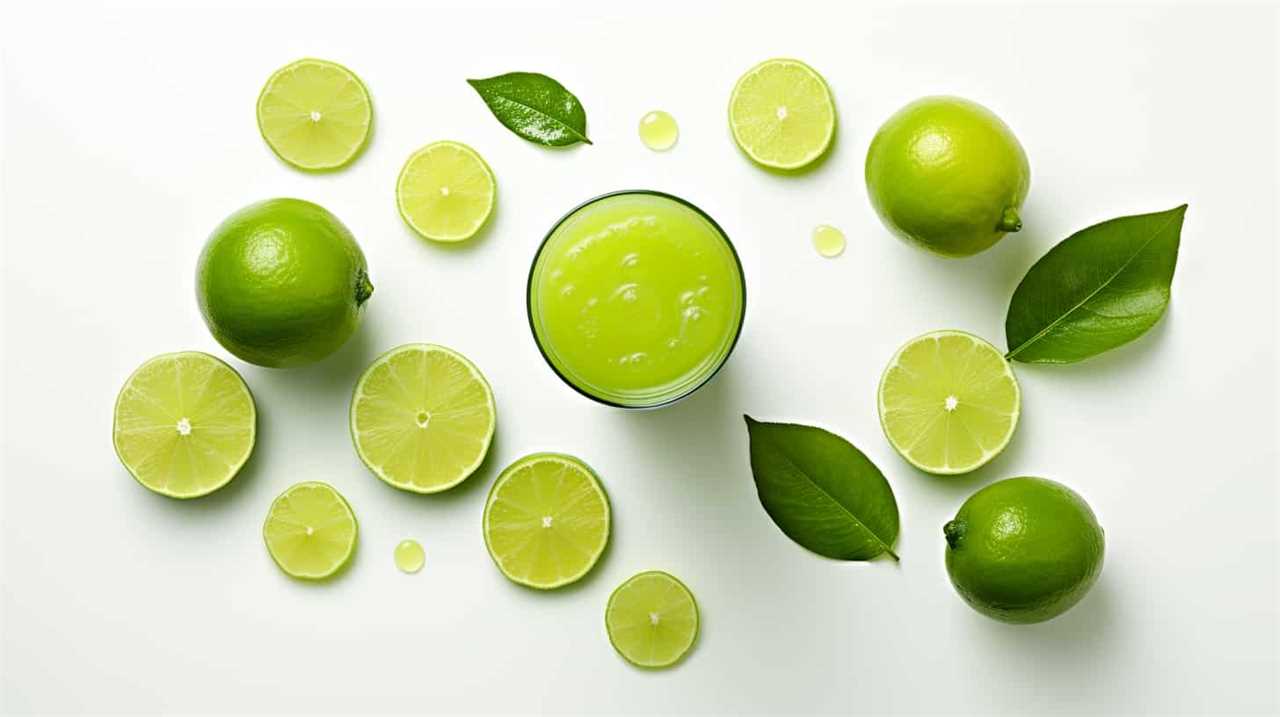
Key Takeaways
- Choose a reputable brand of aloe vera juice that prioritizes quality and uses organic, pure aloe vera.
- Avoid brands that contain added sugars or artificial ingredients.
- Use natural sweeteners like honey, agave syrup, or stevia to enhance the taste of aloe vera juice.
- Experiment with adding fruits, herbs, and other juices to create unique flavor combinations and enhance the health benefits of aloe vera juice.
Choosing the Right Aloe Vera Juice
We can enhance our experience with aloe vera juice by selecting the right brand and type for our preferences. When it comes to finding a reputable brand, it’s important to do some research and read reviews from other consumers. Look for brands that prioritize quality and use organic, pure aloe vera without any added sugars or artificial ingredients. Understanding the health benefits of aloe vera juice is also crucial in making the right choice. Aloe vera is known for its soothing properties, aiding digestion, promoting skin health, and boosting the immune system. By choosing a high-quality brand, we can ensure that we’re getting the maximum benefits from our aloe vera juice.
Now that we know how to choose the right brand, let’s move on to the next step of adding natural sweeteners.
Adding Natural Sweeteners
To enhance the flavor of our aloe vera juice, we can add natural sweeteners such as honey or agave syrup. Using alternative sweeteners not only adds sweetness but also brings unique flavors to the juice. Here are some options to consider:
- Stevia: A natural sweetener derived from the Stevia plant, it’s a zero-calorie alternative to sugar.
- Maple Syrup: This natural sweetener adds a rich and earthy flavor to the aloe vera juice.
- Dates: Pureed dates can be used to sweeten the juice while also providing essential nutrients like fiber.
In addition to using alternative sweeteners, we can enhance the flavor of aloe vera juice by adding spices and extracts. Cinnamon, ginger, or vanilla extract can add warmth and depth to the taste. By experimenting with different combinations of these natural sweeteners, spices, and extracts, we can create a flavor profile that suits our preferences.
Now, let’s move on to the next section and learn how to infuse aloe vera juice with fruits and herbs to further enhance its taste.
Infusing With Fruits and Herbs
As we explore ways to make our aloe vera juice taste better, one option to consider is infusing it with fruits and herbs. Creating unique aloe vera blends by adding fruits and herbs not only enhances the flavor but also adds a touch of freshness and complexity to the juice. For example, combining aloe vera juice with lemon, mint, or berries can create a refreshing drink that’s both delicious and packed with additional nutrients. It’s similar to the ease of making lemonade with bottled juice—quick, convenient, and customizable to suit your preferences. By experimenting with different fruit and herb combinations, you can elevate your aloe vera juice experience while still reaping its health benefits.
Fruits like strawberries, pineapple, or citrus can add a burst of sweetness, while herbs like mint, basil, or ginger can provide a subtle yet refreshing twist. Exploring the benefits of herbal infusions can also be beneficial for our health. For example, adding a few sprigs of lavender can promote relaxation and reduce stress. Additionally, infusing aloe vera juice with rosemary can aid digestion and boost the immune system.
Blending With Other Juices
Let’s try mixing aloe vera juice with different fruit juices to create delicious and refreshing blends. Blending aloe vera juice with other fruits not only enhances its taste but also adds nutritional benefits to your drink. Here are three fruit juices that you can mix with aloe vera juice:
- Orange juice: Combining aloe vera juice with orange juice not only adds a tangy flavor but also boosts your intake of vitamin C, which is essential for a strong immune system.
- Pineapple juice: Mixing aloe vera juice with pineapple juice creates a tropical blend that isn’t only refreshing but also helps in digestion. Pineapple contains bromelain, an enzyme that aids in breaking down proteins and promoting better digestion.
- Watermelon juice: Blending aloe vera juice with watermelon juice creates a hydrating and refreshing combination. Watermelon is rich in water content and contains electrolytes that can help replenish your body’s fluids.
Experimenting With Flavor Combinations
While we can try various flavor combinations with aloe vera juice, it’s important to find the right balance to enhance its taste. Experimenting with different flavors can’t only make the juice more enjoyable but also enhance its health benefits.
Aloe vera juice is known for its numerous health benefits, such as boosting digestion, promoting hydration, and supporting the immune system. By adding complementary flavors, we can create a refreshing summer drink that not only tastes great but also provides a nutritional boost.
Some popular flavor combinations include mixing aloe vera juice with citrus fruits like lemon or orange, adding a splash of coconut water for a tropical twist, or combining it with cucumber and mint for a refreshing and cooling effect.
Don’t be afraid to get creative and find the flavor combination that suits your taste buds best!
Frequently Asked Questions
Can I Use Store-Bought Aloe Vera Gel Instead of Fresh Aloe Vera for Making Juice?
Yes, you can use store-bought aloe vera gel instead of fresh aloe vera for making juice. However, it’s important to note that fresh aloe vera juice may have more health benefits due to its higher nutrient content.
How Long Can I Store Aloe Vera Juice in the Refrigerator?
Aloe vera juice can be stored in the refrigerator for up to a week. Refrigeration helps maintain the longevity and freshness of the juice, preserving its beneficial properties. It’s important to store the juice in an airtight container to prevent contamination and maintain its quality. Similarly, you might wonder *how long ginger juice lasts*; typically, fresh ginger juice can be refrigerated for about 1–2 weeks as well. Both aloe vera and ginger juices are best consumed within their shelf life to ensure maximum potency and health benefits. Additionally, freezing either juice can extend their shelf life, though some loss of nutrients and potency may occur during the process. When thinking about *how long fresh juice lasts*, it’s crucial to check for signs of spoilage, such as changes in smell, taste, or color, before consuming. To enjoy the best results, it’s always recommended to use fresh ingredients and properly store the juice to ensure you’re getting the most out of its health benefits.
Can Aloe Vera Juice Help With Digestive Issues?
Aloe vera juice can potentially help with digestive issues when taken in appropriate dosages. However, it is important to note that there may be potential side effects. It is always best to consult with a healthcare professional before starting any new supplement regimen.
Can I Use Artificial Sweeteners Instead of Natural Sweeteners in My Aloe Vera Juice?
Using artificial sweeteners in aloe vera juice may affect its taste and potential health benefits. However, natural sweeteners like honey or stevia can enhance the flavor without compromising its nutritional value.

Is It Safe to Drink Aloe Vera Juice Every Day?
Drinking aloe vera juice daily can have numerous benefits, such as improving digestion and boosting the immune system. However, consuming it regularly may also lead to potential side effects like diarrhea or stomach cramps.
Conclusion
In conclusion, making aloe vera juice taste better is easy and enjoyable.
By choosing the right aloe vera juice and adding natural sweeteners, infusing with fruits and herbs, blending with other juices, and experimenting with flavor combinations, you can create a delightful and refreshing drink.
So go ahead and unleash your creativity in the kitchen, and transform your aloe vera juice into a sensational elixir that will transport your taste buds to paradise.
Susannah expertise lies in researching and compiling evidence-based content on juicing, nutrition, and overall health. She is committed to ensuring that The Juicery World offers accurate, up-to-date, and trustworthy information to empower readers to take control of their health. Susannah’s goal is to inspire individuals to embrace juicing as a way to nourish their bodies and live their best lives.
Juice Tips and Tricks
How to Make a Glass of Lemonade With Bottled Lemon Juice

Are you craving a cool glass of lemonade to quench your thirst? Look no further! Try out our perfect recipe using bottled lemon juice that will surely please your taste buds.
In this article, we’ll guide you through the process of creating a tangy and sweet concoction that will leave you feeling refreshed and satisfied.
So grab your ingredients and let’s get started on this delightful journey of serving ourselves and others a glass of pure lemony goodness.
Key Takeaways
- Consider the storage of the bottled lemon juice (dark glass or plastic bottles, protect from light exposure, check expiration date)
- Choose a suitable pitcher and fresh lemons for enhanced flavor
- Store the lemonade concentrate in the refrigerator to maintain freshness
- Adjust the sweetness and tartness to taste with sugar or more lemon juice, and experiment with different sweeteners or additional flavors.
Choosing the Right Bottled Lemon Juice
What are the key factors we should consider when selecting the right bottled lemon juice for our lemonade?
One important factor is how the lemon juice is stored. Look for bottles that are made of dark glass or plastic, as they help protect the juice from light exposure, which can degrade its quality. It’s also important to check the expiration date to ensure freshness.
Another benefit of using bottled lemon juice is convenience. It saves time and effort compared to squeezing fresh lemons. Additionally, bottled lemon juice provides consistent flavor, as the acidity levels are standardized.
When selecting a brand, consider reading reviews and checking for certifications, such as organic or non-GMO.
Gathering the Necessary Ingredients and Tools
How can we gather all the necessary ingredients and tools to make a glass of lemonade with bottled lemon juice? First, we’ll need to collect bottled lemon juice, sugar, and cold water, as well as a pitcher and a spoon for mixing. If you prefer extra flavor, you can also gather ice and optional add-ins like mint or soda water. While preparing the lemonade, it’s easy to understand why some people wonder about other citrus drinks and may ask, “how many oranges per gallon” are needed when making orange juice instead. Once everything is assembled, combine the lemon juice, sugar, and water in the pitcher, stirring until the sugar dissolves. Feel free to adjust the sweetness or tartness to your liking, and don’t forget to add ice or any optional add-ins for an extra refreshing touch. This process might even make you curious about how much juice from oranges is needed when making fresh orange juice compared to using bottled citrus products. Once your lemonade is ready, pour it into a glass and enjoy the refreshing taste. This simple recipe can inspire you to try other homemade juices, such as learning **how to make pear juice** or experimenting with other fruit combinations. Whether you’re using fresh fruits or bottled options, creating your own beverages is a fun and rewarding way to personalize your drinks.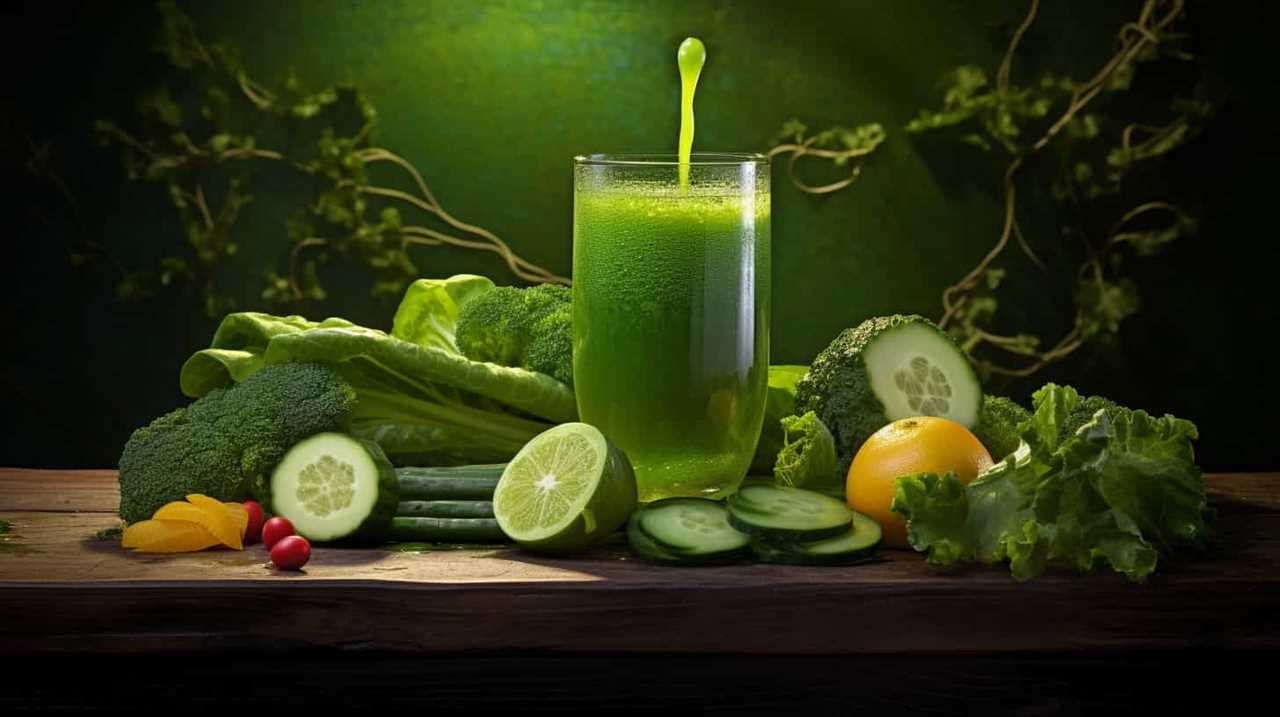
It’s important to start with the right pitcher. Look for a pitcher that’s made of glass or BPA-free plastic, as these materials won’t affect the taste of the lemonade. The pitcher should also have a lid or cover to keep the lemonade fresh and prevent spills.
Now, let’s talk about the lemons. While bottled lemon juice is convenient, using fresh lemons instead can elevate the flavor of your lemonade. Choose lemons that are firm and have a bright yellow color. Give them a gentle squeeze to ensure they’re juicy. To extract the juice, you’ll need a citrus juicer or a reamer. These tools make it easy to get every last drop of juice from the lemons.
Mixing the Lemonade Concentrate
To start mixing the lemonade concentrate, we’ll slowly pour the bottled lemon juice into the pitcher. It’s important to choose the right container for the lemonade concentrate. A pitcher with a lid or a tightly sealed container will help maintain the freshness and prevent any spills or leaks. Once the lemon juice is in the pitcher, we can move on to the next step of adding water and sweetener.
To ensure the lemonade concentrate stays fresh, it’s essential to store it properly. Keep the pitcher in the refrigerator to maintain its cool temperature and prevent any bacteria growth. If you have any leftover concentrate, transfer it to a smaller container with an airtight lid before refrigerating. This will help retain its flavor and prevent any contamination.
Now that we’ve mixed the lemonade concentrate, it’s time to adjust the sweetness and tartness to taste.
Adjusting the Sweetness and Tartness to Taste
We can adjust the sweetness and tartness of the lemonade to taste by adding more sugar or lemon juice, respectively. If you prefer a sweeter lemonade, simply add more sugar and stir until it dissolves completely. You can experiment with different sweeteners such as honey or agave syrup to find the perfect balance of sweetness.
On the other hand, if you want a tangier lemonade, add more lemon juice gradually, tasting as you go until it reaches your desired level of tartness.
Additionally, you can get creative with your lemonade by adding flavors like fresh mint leaves or a hint of lavender. These additions can elevate the flavor profile and create a more refreshing and unique experience.
Now that we’ve adjusted the sweetness and tartness of our lemonade, let’s move on to serving and enjoying your refreshing glass of lemonade.
Serving and Enjoying Your Refreshing Glass of Lemonade
Now let’s sit back, relax, and savor our refreshing glass of lemonade.
When it comes to serving and enjoying this delightful drink, there are a few techniques and garnishing options to consider.
Firstly, serving your lemonade chilled is essential for maximum enjoyment. Ensure that you have chilled glasses or add ice cubes to the glasses before pouring the lemonade.

To add a touch of elegance, you can garnish your lemonade with a slice of lemon on the rim of the glass. For an extra burst of flavor, you could also add a sprig of fresh mint or a few berries.
Remember to gently stir the lemonade before serving to evenly distribute the flavors.
Now, take a sip, feel the refreshing tang of lemon, and let the sweet and tart flavors dance on your taste buds.
Cheers!
Frequently Asked Questions
Can I Use Fresh Lemons Instead of Bottled Lemon Juice?
Fresh lemons offer numerous benefits over bottled lemon juice. The taste of fresh lemons is unparalleled, providing a vibrant and tangy flavor. Incorporating fresh lemons into your lemonade will elevate its taste and give it a refreshing and authentic twist.
Can I Substitute Sugar With a Different Sweetener?
Substituting sweeteners in lemonade can enhance the flavor and offer health benefits. We’re knowledgeable about alternative sweeteners and can provide precise, detailed instructions on using them in place of sugar.
How Long Does the Lemonade Concentrate Need to Chill in the Refrigerator?
The chilling time for the lemonade concentrate in the refrigerator is typically around 1-2 hours. Using bottled lemon juice offers the benefit of convenience and consistent flavor for a refreshing glass of lemonade.
Can I Add Other Fruits or Flavors to the Lemonade?
Sure, we can definitely add different fruits or flavors to our lemonade. It’s a great way to experiment with unique flavors and create refreshing, personalized drinks. The possibilities are endless!
How Long Does the Lemonade Stay Fresh in the Refrigerator?
Lemonade made with bottled lemon juice can stay fresh in the refrigerator for about 5-7 days. To maximize shelf life, store it in an airtight container and keep it chilled.
Conclusion
And so, with a few simple steps and the right ingredients, a glass of refreshing lemonade is born.
Like a symphony of flavors dancing on your taste buds, this tangy elixir quenches thirst and brings joy on a hot summer day.
Just a sip transports you to a world of citrusy delight, where the sweetness and tartness blend harmoniously.
So go ahead, indulge in the art of lemonade-making and savor every drop of this sun-kissed nectar.
Cheers to the perfect glass of lemonade!
Susannah expertise lies in researching and compiling evidence-based content on juicing, nutrition, and overall health. She is committed to ensuring that The Juicery World offers accurate, up-to-date, and trustworthy information to empower readers to take control of their health. Susannah’s goal is to inspire individuals to embrace juicing as a way to nourish their bodies and live their best lives.
Juice Tips and Tricks
How to Know if Orange Juice Is Bad

We’ve all been in that situation before – reaching for a glass of orange juice and hesitating, unsure if it’s still okay to drink. Fear not! This article will give you the knowledge you need to determine for sure if your orange juice is still fresh or if it’s gone bad.
With a blend of scientific precision and practical tips, we’ll explore color changes, strange smells, off taste, texture changes, and mold or growth that may indicate spoilage.
Let’s dive in and serve ourselves a refreshing glass of certainty!
Key Takeaways
- Color changes in orange juice can indicate a loss of freshness and shelf life extension, but it doesn’t necessarily mean the juice is bad.
- Unusual or off-putting odors in orange juice, such as sour or fermented scents, can be a sign of poor quality.
- An off taste in orange juice, such as sour, bitter, or fermented flavors, suggests that the juice is spoiled.
- Texture changes in orange juice, such as pulp separation or a thicker consistency, can occur as the juice ages, so it’s important to consume it before the expiration date.
Color Changes in Orange Juice
We should be aware that color changes can indicate whether orange juice is bad.
When it comes to orange juice, color is a crucial factor to consider. As oranges are exposed to air, an oxidation process occurs, which leads to changes in color. Fresh orange juice has a vibrant orange hue, indicating its freshness and high nutritional value.
However, as time passes, the juice may undergo a color change, turning dull or brownish. This change in color is a result of the oxidation process, which affects the flavor and quality of the juice. It’s important to note that while a change in color doesn’t necessarily mean the juice is bad, it does indicate that the juice is losing its freshness and shelf life extension.
Therefore, it’s advisable to consume orange juice when it’s at its freshest, as indicated by its vibrant orange color.
Strange Smells in Orange Juice
When it comes to evaluating orange juice, we should be cautious of any strange smells or odors. A fresh, pleasant smell is indicative of good quality orange juice. However, if you notice any unusual or off-putting odors, it may be a sign that the juice has gone bad. These smells can range from a sour or fermented scent to a rancid or moldy aroma.
It’s important to note that while some natural variations in scent can occur due to the specific variety of oranges used, any strong or unpleasant smells should raise concerns. If you have citrus fruit allergies, it’s especially important to pay attention to the smell of orange juice, as it could indicate the presence of spoilage or contamination.
Ensuring the quality of orange juice is essential as it’s a popular beverage known for its health benefits, including being rich in vitamin C and antioxidants.
Off Taste of Orange Juice
Our taste buds can detect even the slightest hint of an off taste in orange juice, which can indicate that it has gone bad. The taste of orange juice should be fresh, tangy, and slightly sweet. If it tastes sour, bitter, or fermented, it’s likely spoiled.
One common cause of an off taste in orange juice is the use of overripe oranges. When oranges become overripe, their flavor profile changes, resulting in a less pleasant taste. Another factor to consider is the expiration date. Orange juice that has passed its expiration date is more likely to develop an off taste. It’s important to check the expiration date before consuming orange juice to ensure its freshness and quality. Additionally, improper storage conditions, such as leaving the juice at room temperature for extended periods, can lead to the development of unpleasant flavors. Storing orange juice in the refrigerator helps maintain its freshness for longer. For those exploring different juice options, aloe vera juice flavor tips suggest pairing tart juices with milder flavors to balance the overall taste.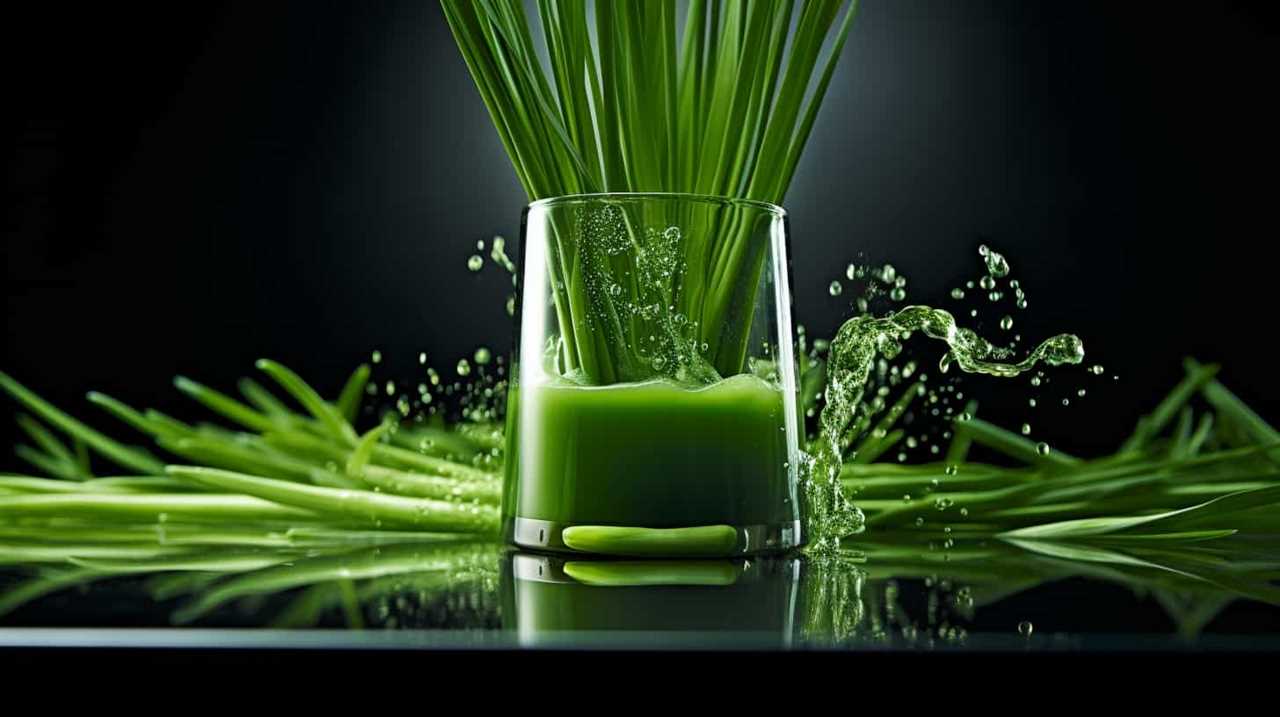
Now, let’s move on to discuss the texture changes in orange juice.
Texture Changes in Orange Juice
As we explore the texture changes in orange juice, it’s important to note that certain factors can cause it to become thicker or develop sediment. One common texture change in orange juice is pulp separation, where the pulp separates from the liquid and settles at the bottom. This can occur naturally over time, as the pulp particles become denser and sink.
Another factor that can affect the texture of orange juice is the expiration date. As orange juice ages, it may start to develop a thicker consistency and even form sediment. This is a result of the natural breakdown of the juice’s components. Therefore, it’s crucial to check the expiration date on orange juice and consume it before it reaches its expiration date to avoid any undesirable texture changes.
Mold or Growth in Orange Juice
We need to be aware of the possibility of mold or other growth occurring in orange juice. Mold can develop in orange juice if it isn’t stored properly or if it has passed its expiration date.
To prevent mold growth, it’s important to follow these steps:
- Store orange juice in the refrigerator at a temperature below 40°F (4°C).
- Check the expiration date on the bottle before consuming. Discard any orange juice that has expired.
- Keep the container tightly sealed to prevent air and moisture from entering, as these can promote mold growth.
Regularly inspecting orange juice for any signs of mold or unusual growth is essential. If you notice any discoloration, a strange odor, or visible mold, it’s best to discard the juice to avoid any potential health risks.
Frequently Asked Questions
Can Orange Juice Go Bad if It’s Stored in the Freezer for Too Long?
Frozen orange juice can potentially lose its nutrients and change its taste if stored in the freezer for too long. It is important to check for signs of spoilage before consuming it.
How Long Can Orange Juice Stay Fresh in the Refrigerator Once It’s Opened?
Once opened, orange juice can stay fresh in the refrigerator for about 7-10 days. To maintain its freshness, store it properly by keeping it tightly sealed and at a consistently cold temperature. If the orange juice develops an off odor, flavor, or appearance, it’s best to discard it to avoid any potential health risks. Factors like exposure to air and varying temperatures can influence how long orange juice lasts, so it’s crucial to handle it with care. Always check the expiration date as a general guide, but remember that proper storage can extend its freshness slightly. Additionally, avoid leaving the orange juice out at room temperature for extended periods, as this can significantly shorten how long orange juice lasts. Freezing the juice can be another option to extend its shelf life, but be aware that this may alter its texture and taste once thawed. By following these precautions, you can ensure your orange juice stays fresh and safe to consume.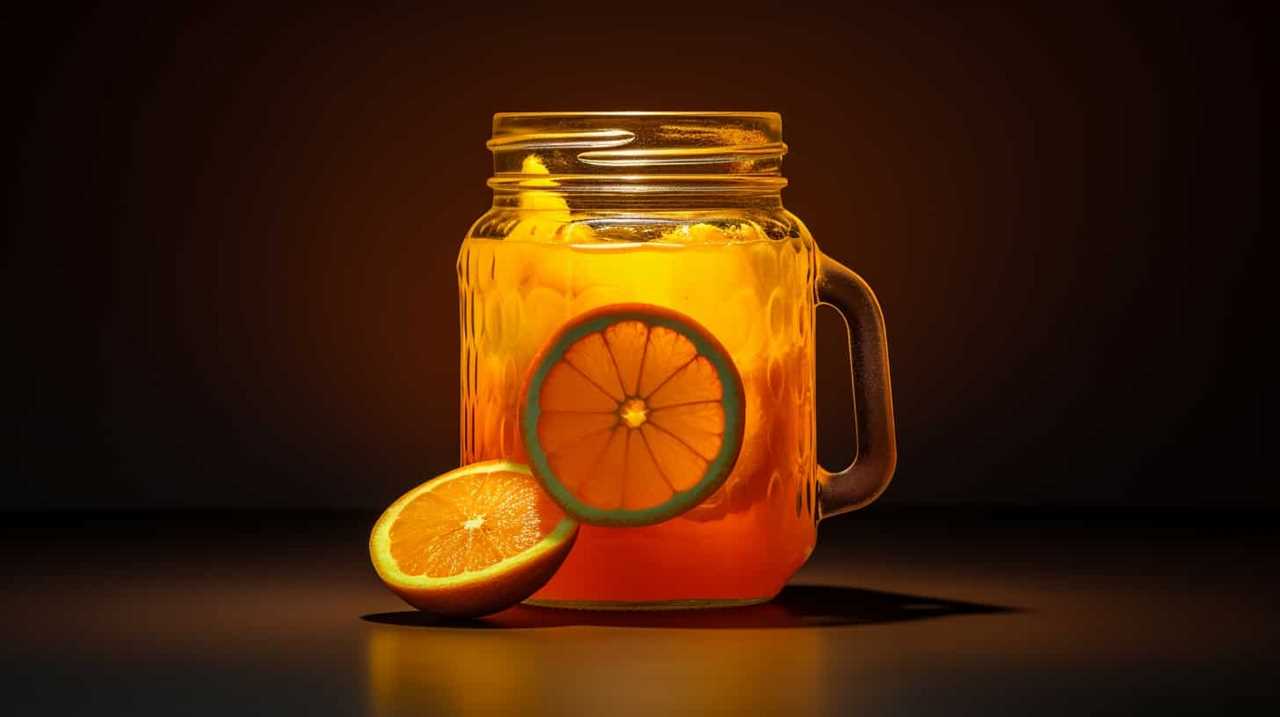
Is It Safe to Consume Orange Juice That Has Been Left Out at Room Temperature Overnight?
Left out orange juice may not be safe to drink as it can harbor harmful bacteria. Signs of spoiled orange juice include a sour smell, mold growth, and a change in color or taste.
Can Orange Juice Develop Harmful Bacteria if It’s Past Its Expiration Date but Still Looks and Smells Fine?
Orange juice can cause food poisoning if it develops harmful bacteria, even if it looks and smells fine. Signs of spoiled orange juice include a sour smell, mold growth, and a change in color or taste.
Does the Nutritional Value of Orange Juice Decrease as It Starts to Go Bad?
As orange juice goes bad, its nutritional value decreases. The longer it sits on the shelf, the more nutrients it loses. Signs of spoilage include a sour smell, off taste, and mold growth.
Conclusion
In conclusion, determining if orange juice is bad requires careful observation of color changes, strange smells, off taste, and texture changes. Just like a detective investigating a case, we must rely on our senses to detect any signs of spoilage.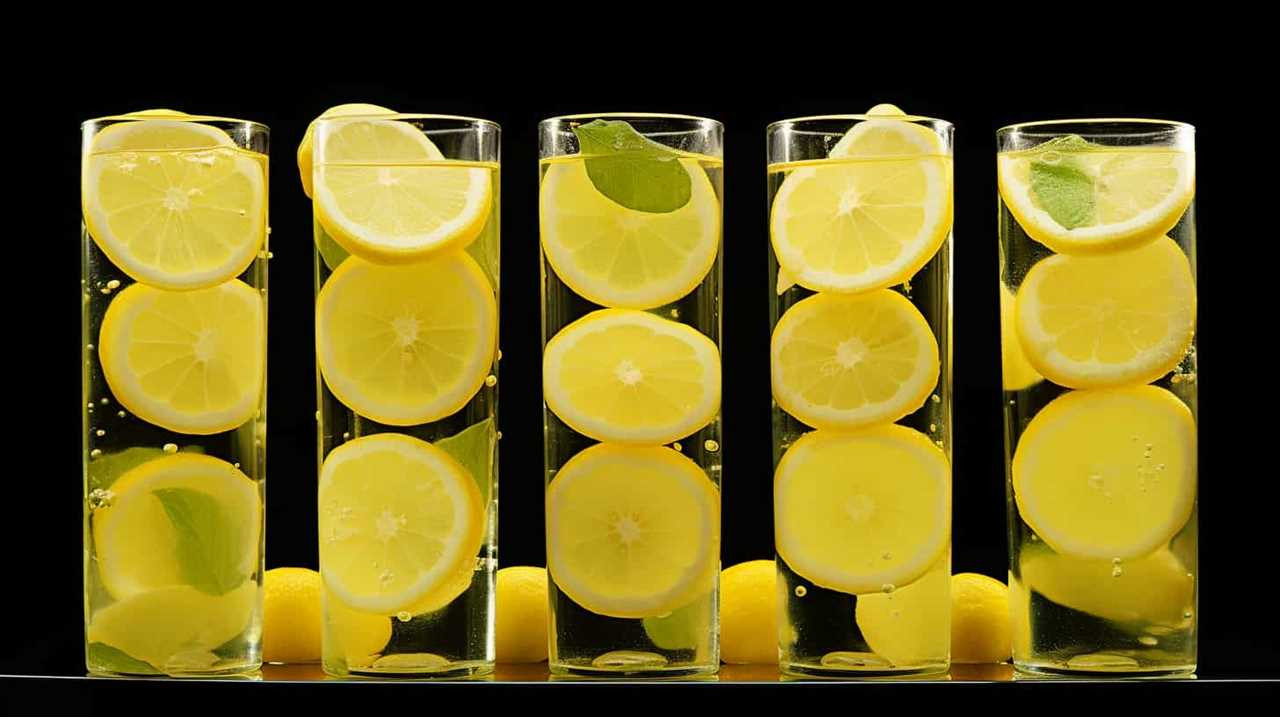
If we detect mold or growth in the orange juice, it’s a clear indication that it’s no longer safe to consume. By remaining vigilant and attuned to these indicators, we can ensure that our orange juice is always fresh and enjoyable.
Susannah expertise lies in researching and compiling evidence-based content on juicing, nutrition, and overall health. She is committed to ensuring that The Juicery World offers accurate, up-to-date, and trustworthy information to empower readers to take control of their health. Susannah’s goal is to inspire individuals to embrace juicing as a way to nourish their bodies and live their best lives.
-

 Vetted2 months ago
Vetted2 months ago15 Best Juices for Diabetics: Refreshing Options That Won’t Spike Your Blood Sugar
-

 Vetted2 months ago
Vetted2 months ago15 Best Decaf Coffee Options for Flavor Lovers Who Need a Caffeine Break
-

 Vetted2 months ago
Vetted2 months ago15 Best Espresso Ground Coffees to Elevate Your Morning Brew
-

 Vetted2 months ago
Vetted2 months ago15 Best K-Cup Coffee Pods for a Perfect Brew Every Time
-

 Vetted2 months ago
Vetted2 months ago15 Best Beans for Espresso: A Guide to Perfecting Your Brew
-

 Vetted2 months ago
Vetted2 months ago15 Best Kona Coffees to Savor the Rich Flavors of Hawaii
-

 Vetted2 months ago
Vetted2 months ago15 Best Inexpensive Espresso Machines That Brew Quality Coffee on a Budget
-

 Vetted2 months ago
Vetted2 months ago15 Best Cold Brew Coffees to Keep You Refreshed All Summer Long






